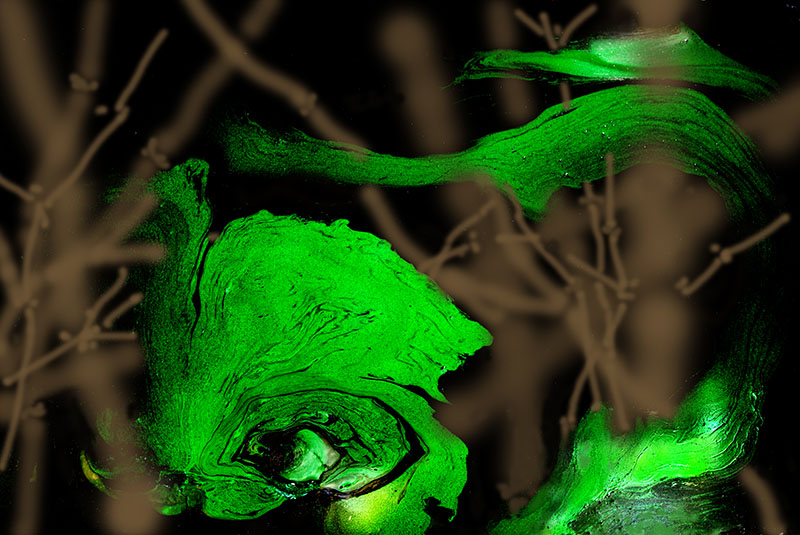
Back to All Exhibitions

H.H. Dorje Chang Buddha III occupies many spaces as an artist, including the realm of abstraction as developed within the Western tradition. A little more than a century ago, European and North American artists began to let shape, form, color, and line no longer serve representation but possess their own expressive and conceptual value. With new emphasis on the imagination and process, artists used their materials and methods to suggest or embody dimensions other than the visual alone. Artists were motivated by spiritual, somatic, and psychological principles in which an aesthetic experience could transcend everyday reality and even precipitate an expanding consciousness.
His Holiness comes to abstraction in which painting is such a vehicle for enlightenment. His colors are like messengers to the soul, speaking a language of cosmic dynamics or life forces. Hues do not describe but have a palpable energy, and pigment flows in a way that suggests coming into being or dissolving. In his Chinese painting and calligraphy, H.H. Dorje Chang Buddha III mastered a manner of brushwork in which gesture reveals human interconnectedness with nature. This sensibility is present in his abstract compositions, with the artist’s hand revealing that all is one — beyond the illusion of perception.
Assuming a full range of color, his abstract paintings are characterized by fluidity akin to a supreme Buddhist good.
Among the proponents of abstraction in Western art, many were influenced by various Eastern traditions and/or philosophies. Increased awareness of Asian artworks engendered a stylistic release, but the underlying perception of nature and spirit as a unity of matter and spirit would be an even more powerful agent of change. Coming full circle, the contemporary artwork of H.H. Dorje Chang Buddha III is a contemporary manifestation of this dialogue that brings these art worlds together, profound in the deeply resonant dharma of His Holiness.